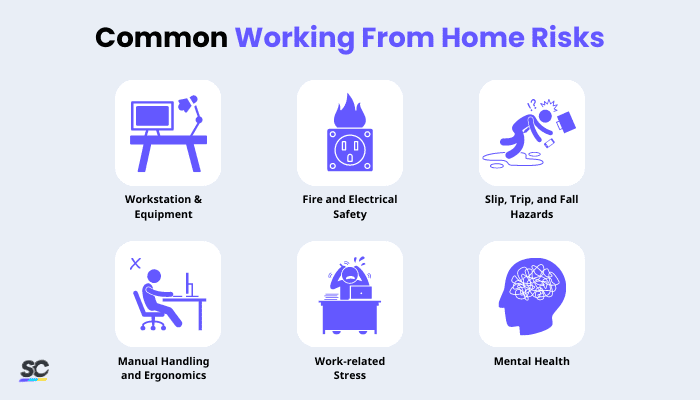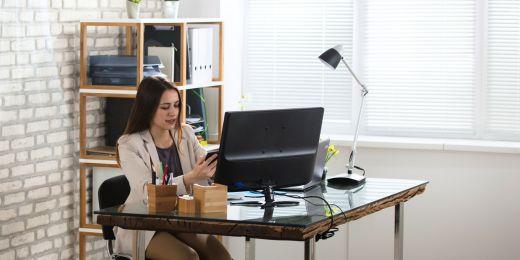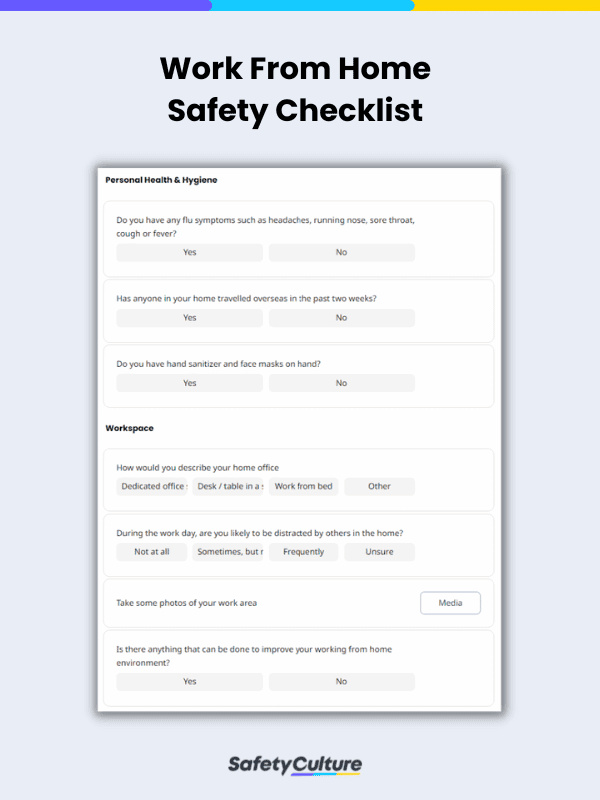Work from Home Advantages and Disadvantages
The benefits of working from home come with some drawbacks, and understanding both of the advantages and disadvantages can help people to decide if working from home is the right work style for them.
Time
Advantages
|
Disadvantages
|
| Set your own work hours |
Tendency to overwork |
| More time for yourself and your family |
More prone to procrastination |
| No need to commute |
Difficulty sticking to a routine |
Income
Advantages
|
Disadvantages
|
| Same or more pay than an in-office counterpart |
Potential ebb and flow nature of income |
| No planned or unexpected eat-out expenses, commute fares, and parking fees |
Increased groceries, food deliveries, and home utility bills |
| Tax breaks for freelancers and self-employed |
Miss out on corporate office perks e.g. company-issued car or phone |
Workspace
Advantages
|
Disadvantages
|
| Freedom to work in any location |
Struggle to set home-work boundaries |
| Environment-friendly, personalized workstations |
Inadequate or unreliable office equipment and data security issues |
| More comfortable working conditions, including attire |
Personal privacy and ergonomic problems |
Workflow
Advantages
|
Disadvantages
|
| Fewer interruptions from colleagues |
Distractions from family, pets, and chores |
| Working independently and under minimal supervision |
Risk of unrecognized efforts and mediocre performance or poor quality of work |
| Less frequent and more efficient meetings |
Delayed access to or approval for tools, documents, and other requests |
Relationships
Advantages
|
Disadvantages
|
| Working while taking care of parents, children, or pets |
Challenging to collaborate with and get feedback from peers |
| Minimal office politics and drama |
Higher likelihood for miscommunication and misunderstanding |
| Remotely maintain built relationships within the company or among clients |
Prone to boredom, lack of motivation, and feelings of isolation or loneliness |
Common Working From Home Risks and How to Mitigate Them
Here are common safety and health risks when working from home, so once they are identified, action can be taken to minimize them:

- Workstation and Work Equipment – Typical work-from-home equipment such as printers and shredding machines should be used correctly and the display screens of desktop computers or laptops, keyboards, and mouses should be in good condition to avoid unnecessary work-related accidents.
- Fire and Electrical Safety – The most common fire hazards at home offices include electrical equipment, faulty wiring, and flammable materials. Regularly disposing of waste, including papers, and switching off equipment when not in use can help prevent the risk of fires. Additional security measures, such as working in a lockable room can be implemented to reduce safety risks to other people at home, especially young children.
- Slip, Trip, and Fall Hazards – Carpets or throw rugs, clutter, and uneven flooring or stair steps are common causes of slips, trips, and falls when working from home. Secure floor coverings, keep essential items within easy reach, and clear walkways and corridors by upholding standards of good housekeeping even at home offices.
- Manual Handling and Ergonomics – Repetitive movements and sustained awkward posture and body positioning can result in fatigue and lead to back, neck, and shoulder injuries. Home office desks and chairs should be ergonomically designed to reduce the risk of musculoskeletal problems and potentially restrict employees’ ability to undertake a wide range of work activities.
- Work-related Stress – Since work-from-home employees are likely to work longer hours because they have no set schedule, sticking to a daily routine that includes short breaks and clearly defined lunch and end-of-shift times can help reduce work-related stress.
- Mental Health – Feelings of isolation can negatively impact the performance of employees who are working from home. Research has shown that social isolation is associated with depression and sleeping problems and with an increased risk for early mortality. Practicing appropriate self-care, connecting with colleagues via virtual meetings, and talking about non-work-related matters using other online communication platforms are essential when working from home.
How to Work from Home
After remote teams assess and control safety and health risks in their respective home offices, here is how they can function more effectively when working from home:
How Employees Can Work from Home Effectively
- Build self-discipline – Setting a dedicated workspace can help you avoid distractions such as social media, TV, or chores, and sticking to your routine as if you still went to an office building like getting up early, taking a shower, and changing your clothes, can help establish boundaries between your place and time for work and for yourself.
- Be proactive – Planning allows you to foresee any changes or unnecessary downtime so you can respond accordingly, making the most out of your time.
- Boost communication –Clarifying work-related tasks lets you set your and your manager’s expectations about what should be done during this period of working from home. Collaborate more often with your teammates to prevent misunderstandings and stay connected with actual human beings other than your family.
How Managers Can Work from Home Effectively
- Managing a Team Member: structured daily check-ins and focus on goals, not activity. Think, “How are you doing?” instead of, “What are you doing?”.
- Managing a Team: over-communicate and practice rules of engagement e.g. expected frequency, means, and ideal timing of communication.
- Facilitating Virtual Meetings: keep the dialogue flowing and make decisions together; a meeting is not a monologue nor a presentation you can simply send via email.
- Facilitating Ad-hoc Communication: offer emotional support and opportunities for social interaction e.g. Friday happy hour, online board games, and virtual workouts.




